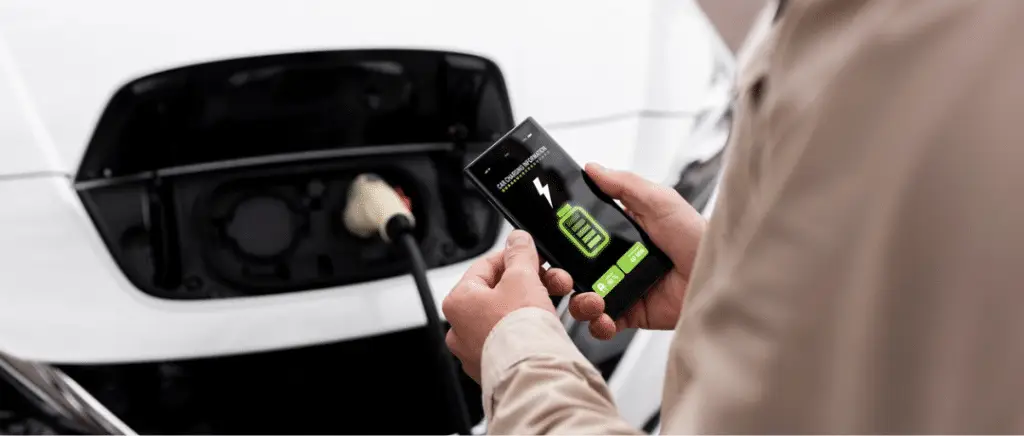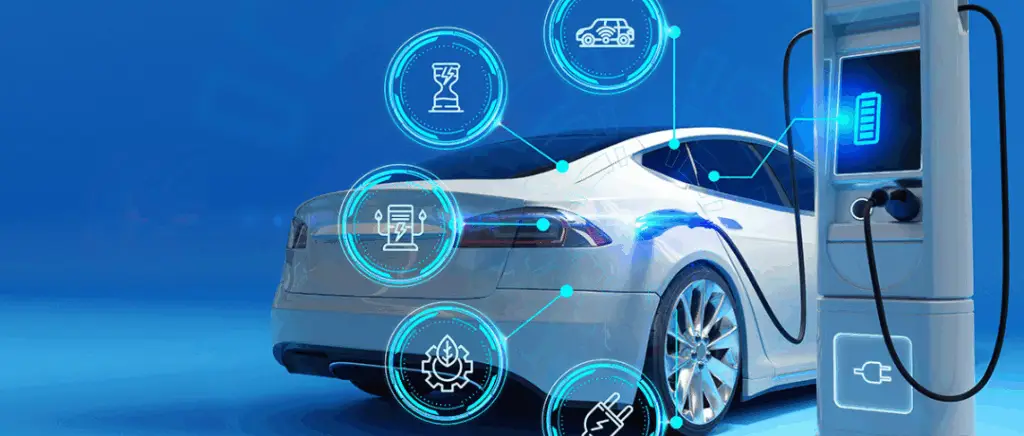Monday to Friday
9am - 12.30pm - 2pm - 7pm
What are the main drivers behind the adoption of electric cars?
Financial incentives
The growing adoption of electric cars is largely due to the various financial incentives introduced by the government. These make electric vehicles more accessible.
Purchase subsidies
One of the main levers is the environmental bonus. In France, this can amount to up to €7,000 for the purchase of a new electric car, depending on the price of the vehicle and the household income. This aid considerably reduces the initial cost, making it more competitive with combustion-powered cars.
The conversion premium
In addition to the ecological bonus, France also offers a conversion premium. As a reminder, this bonus encourages owners of old, polluting vehicles to switch to cleaner models. In 2023, the bonus was worth up to €5,000, which could be combined with the ecological bonus to give a total reduction of up to €12,000 on the purchase price of a new electric car. This will still be the case in 2024.
Tax benefits
Tax benefits also play a key role in promoting electric vehicles. Purchasers of electric cars benefit from partial or total exemptions from vehicle tax. For example, in France, electric cars are exempt from the company car tax (TVS) for three years. In addition, in certain regions, owners of electric vehicles can benefit from a reduction or exemption from the regional tax on vehicle registration documents.
Support for the installation of charging points
The installation of home or business charging points can also be subsidised. In France, the tax credit for energy transition (CITE) provides aid of up to 75 % of the cost of installing a charging point, with a ceiling of €300. The aim of this aid is to facilitate access to recharging solutions, one of the main obstacles to the adoption of electric cars.
Local incentives
Some municipalities offer additional incentives, such as free or reduced parking rates for electric vehicles. The city of Paris, for example, offers free parking for electric vehicles, an incentive that makes owning such a vehicle even more attractive to residents of large cities.
Also read → Tax benefits of electric vehicles
How is the range of products on offer from manufacturers evolving?
The growth in the range offered by carmakers can be explained by a diversification of models, improved performance and an increase in the number of vehicles on the market.autonomy vehicles.
Diversification of models
One of the most striking aspects of the development of the range is the diversification of the models available. By 2024, virtually all the major carmakers will be offering electric vehicles in their ranges (e.g. : Renault Megane e-Tech, Volkswagen ID.4 or even Fiat 500ᵉ). According to a report by the International Energy Agency (IEA), the number of electric car models available on the world market will reach more than 500 in 2023, compared with just 60 in 2015.
Brands such as Teslaa pioneer in this field, continue to innovate with models such as the Tesla Model 3 and the Model Y with over 1.2 million sales worldwide by 2023. Other manufacturers such as Volkswagen have launched entire ranges of electric vehicles with the ID series, including popular models such as ID.3 and ID.4which combine performance and affordability.
Increased autonomy
The range of electric vehicles is a crucial criterion for buyers, and has been improved. In 2024, electric car models will have an average range of 400 km per charge, according to the European Commission. a report by BloombergNEFThis represents an increase of almost 30 % compared to 2018. Models such as the Tesla Model S Plaid even offer an impressive range of over 600 km, reducing the anxiety of running out of fuel and making long journeys more feasible.
Performance and technological innovation
Manufacturers have also focused on improving the performance of their electric vehicles. For example, the Porsche Taycan is capable of accelerating from 0 to 100 km/h in less than three seconds, rivalling the best internal combustion sports cars. There have also been major advances in battery technology, with companies such as Nissan which are introducing solid-state batteries on their new models, promising faster recharging and greater energy density.
More affordable prices
The price of electric vehicles is still a determining factor for many consumers. However, thanks to increased production and reduced battery costs, electric car prices have become more affordable. In 2023, the average price of batteries has fallen to around €132 per kWh, compared with €1,100 in 2010. This fall in costs is reflected in vehicle prices: models such as the Dacia Springavailable from €18,690, offer economical options for more modest budgets.
The electric car brands is no longer content to produce electric cars for just one market segment. There are now options to suit all tastes and needs. For example, there are Audi offers Electric SUVs such as the Audi e-tronwhile Renault targets the electric city cars with models such as the Renault Zoé e-Techone of the best-selling electric cars in Europe.
Also read → Future electric cars up to 2030
What are the challenges involved in the transition to electric vehicles?
Charging infrastructure
The recharging facilities are a fundamental pillar, but they also pose a number of challenges that must be overcome. The European Union has more than 500,000 public charging points since mid-2023 (+30 % on the previous year), according to the European Automobile Manufacturers Association (ACEA). For its part, France, with more than 100,000 charging pointsis leading the European pack alongside Germany and the Netherlands.
What are the issues?
- Uneven geographical coverage : Rural areas suffer from a lack of recharging points, whereas major cities and motorways are well equipped.
- Charging capacity : there are still too few fast and ultra-fast charging points (less than 15 %) of the total infrastructure by 2023.
- Interoperability and standardisation : the diversity of plug types and charging standards makes it difficult for users of certain makes of electric car to access charging points.
- Cost and financing : Installing fast-charging stations is expensive, with an average cost of around €30,000 per station.
What initiatives and solutions are available?
- France Recovery Plan: The French government has invested €100 million to roll out 100,000 charging points by 2025, a target that has been reached prematurely.
- Public-private partnerships : Teslawith its Supercharger networkand Ionitya consortium carmakers, are working to install fast-charging stations along Europe's motorways.
- European projects : The European Union finances cross-border projects to create an integrated network of fast-charging stations across Europe, making it easier to travel internationally in electric vehicles.
Also read → What challenges will electric car charging infrastructures face in 2024?
What are consumers' perceptions and reservations?
Autonomy
One of the main concerns of consumers is range anxiety, i.e. the fear of not having enough charge to reach their destination. This fear is exacerbated by the perception that charging infrastructure is insufficient or poorly distributed. A majority of consumers cite insufficient range as the main obstacle to buying an electric car.
The cost
Despite financial incentives (environmental bonus, conversion premium...) The initial cost of buying an electric vehicle is perceived as too high by a large proportion of consumers. This perception is even more pronounced among second-hand car buyers and those with limited budgets.
Distrust
Mistrust of new technologies is another barrier. Some consumers are sceptical about the reliability and longevity of electric vehicles, particularly when it comes to the durability of batteries. A majority of European consumers have doubts about the lifespan of electric vehicle batteries, which affects their purchasing decision.
Wireless recharging technology
Lack of information
The lack of clear and accurate information on the benefits and costs of using electric vehicles also contributes to consumer reluctance. Many have misconceptions about maintenance costs and ease of use, such as the belief that maintenance costs for electric cars are higher than those for internal combustion vehicles.
Experiences and testimonials therefore play a crucial role in changing perceptions. Consumers are more likely to be influenced by the testimonials of friends and family who have already made the switch. Free trials and demonstration programmes are effective tools for overcoming initial apprehensions. The media and awareness campaigns have a strong influence on consumer perceptions.
What does the future hold for electric cars?
Future market trends
- Increased sales of electric vehicles: worldwide sales of electric vehicles are expected to reach 30 million units by 2030.
- Development of recharging infrastructures : The European Union is aiming to install 1 million public charging points by 2025.
- QuantumScape and Toyota are currently working on these innovations.
- Projects to integrate electric vehicles with renewable energies should be launched.
- In 2035, petrol and diesel cars will be banned from production, prompting manufacturers to accelerate their plans to produce electric vehicles.
What are the technological innovations?
Lithium-sulphur batteries
Lithium-sulphur batteries can store up to five times more energy than current lithium-ion batteries, making it possible to travel up to 1,000 km on a single charge. Oxis Energy is actively working on this technology.
By using induction plates installed on the ground to charge electric vehicles, this innovation simplifies the charging experience. Cities such as Oslo are already testing this technology for taxis, and the wider adoption of the wireless charging could become a reality in the next few years.
Artificial intelligence
AI systems can now analyse driving conditions, user habits and traffic data in real time to optimise energy consumption and extend vehicle range. Tesla, for example, uses AI algorithms to optimise battery management and vehicle performance, reducing energy consumption and increasing overall efficiency.
Connected vehicles and the IoT
The Internet of Things (IoT) enables electric vehicles to communicate with charging networks and manage charging during periods of low demand, reducing energy costs for users. Companies such as Nissan and BMW are developing energy management systems that enable vehicles to store and redistribute energy to power grids, creating a more balanced energy ecosystem.
Also read → How does technology improve the professional driving experience?
Conclusion
The transition to electric vehicles is therefore much more than just a trend: it is shaping the future of sustainable mobility. Growing adoption, supported by advanced technological innovations (solid-state batteries, ultra-fast charging, autonomous driving systems) promises to transform our daily lives. As recharging infrastructures expand and environmental policies become more stringent, electric vehicles are becoming an essential solution for a more efficient future.
































